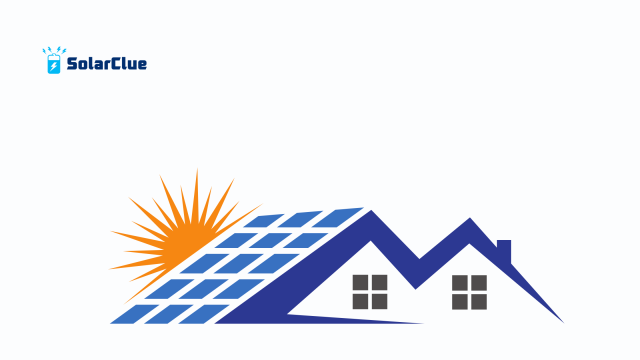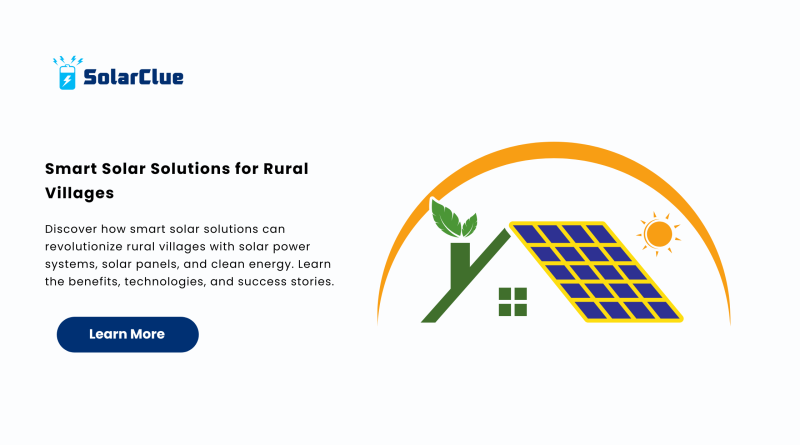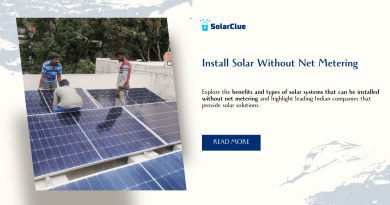Smart Solar Solutions for Rural Villages
Across the globe, rural villages often face unreliable access to electricity. In many developing nations, power outages or complete absence of grid connectivity hinders essential services like education, healthcare, and small-scale businesses. Fortunately, smart solar solutions offer a sustainable path forward. By harnessing solar energy, these regions can leapfrog into a new era of electrification, using decentralized, affordable, and efficient solar power systems.
Table of Contents
- 1 Why Solar is the Ideal Choice for Rural Electrification
- 2 Components of a Smart Solar Power System
- 3 Key Benefits of Smart Solar for Rural Villages
- 4 Challenges and How They’re Being Overcome
- 5 Real-World Case Studies
- 6 The Role of IoT and AI in Smart Solar
- 7 Educational and Community Engagement
- 8 How to Choose the Right Solar Solution
- 9 Government Initiatives Supporting Rural Solar
- 10 What’s Next? The Future of Solar in Rural Areas
- 11 Conclusion: Empowering Rural Lives with the Sun
- 12 FAQs
Why Solar is the Ideal Choice for Rural Electrification
1. Abundant Renewable Resource
Solar energy is abundantly available in most rural areas, especially in tropical and subtropical regions. Unlike fossil fuels, the sun’s energy is free and virtually inexhaustible, making solar a perfect fit for long-term rural sustainability.
2. Cost-Effective and Scalable
Deploying a solar power system involves high initial investment, but low operating costs make it economically viable in the long run. It also avoids the need for expensive transmission infrastructure, making it a scalable solution.
3. Clean and Green
Solar power produces no emissions and reduces dependency on diesel generators and firewood, leading to better air quality and a lower carbon footprint.
Components of a Smart Solar Power System
4. Solar Panels
The heart of any solar power solution, solar panels convert sunlight into electricity. Innovations like bifacial and flexible panels are enhancing efficiency and adaptability.
5. Battery Storage
Battery storage ensures power is available even after the sun goes down. Lithium-ion batteries, often integrated with smart energy management systems, are becoming more accessible and affordable.
6. Inverters and Smart Meters
Inverters convert DC to AC, making electricity usable for homes and devices. Smart meters allow real-time energy tracking and help with efficient energy usage.
Key Benefits of Smart Solar for Rural Villages
7. Energy Independence
Villagers no longer need to rely on a central power grid. Smart solar solutions give autonomy and reliability.
8. Enhanced Quality of Life
Electricity boosts education with lighting for night-time study, supports refrigeration for medicine, and powers communication tools like mobile phones and the internet.
9. Local Economic Development
Access to solar power encourages small-scale industries, agriculture irrigation pumps, and micro-enterprises, generating employment and income.
Challenges and How They’re Being Overcome
10. Upfront Costs
While initial costs are high, financial models like pay-as-you-go, community solar, and government subsidies are addressing this.
11. Technical Expertise
Training local youth in solar installation and maintenance is building sustainable support infrastructure.
12. Policy and Regulation
Progressive policy frameworks, like net metering and solar mandates, are being adopted in many countries to promote solar in rural areas.
Real-World Case Studies

13. India’s Solar-Powered Villages
Villages like Dharnai in Bihar and Baripatha in Odisha are successfully running on solar energy, with microgrids powering schools, shops, and homes.
14. Africa’s Solar Microgrids
In Kenya and Tanzania, solar microgrids are lighting up thousands of off-grid homes, offering a reliable alternative to kerosene and diesel.
The Role of IoT and AI in Smart Solar
15. Smart Monitoring
IoT-based sensors monitor energy production and consumption in real time, ensuring system efficiency and quick fault detection.
16. Predictive Maintenance
AI algorithms can forecast potential issues, allowing proactive maintenance and reducing system downtime.
Educational and Community Engagement
17. Awareness Campaigns
Educating villagers about solar panel usage, maintenance, and benefits is crucial for long-term adoption.
18. Community Ownership
Community-led solar initiatives foster responsibility, transparency, and sustainable use of resources.
How to Choose the Right Solar Solution
19. Assess Energy Needs
Estimate daily power consumption including lighting, appliances, and agricultural equipment.
20. Site Evaluation
Proper site selection ensures optimal sunlight exposure and protection against damage.
21. Compare Systems and Vendors
Look for vendors who offer durable components, after-sales service, and training. Visit SolarClue.com for expert solar solutions tailored to rural needs.
Government Initiatives Supporting Rural Solar
22. Subsidies and Grants
Many governments provide up to 70% subsidy on solar power systems for rural installations.
23. Public-Private Partnerships
Collaborations between NGOs, private firms, and local governments amplify the impact of solar energy projects.
What’s Next? The Future of Solar in Rural Areas
24. Floating and Vertical Solar Panels
These innovative panel designs offer flexibility and reduce land use conflicts.
25. Integration with EV Charging
Rural areas may soon power electric vehicles for transport and agricultural use using solar power.
Conclusion: Empowering Rural Lives with the Sun
Smart solar solutions hold the power to revolutionize rural living, offering sustainable development through clean, renewable energy. By adopting solar energy, rural villages can enjoy improved health, education, and economic outcomes. Whether it’s microgrids, solar home systems, or solar water pumps, the future is undeniably solar.
Explore the future of rural electrification and smart solar innovations by visiting our blog at blog.solarclue.com — we’ve got the knowledge and tools to brighten every village with the power of the sun.
FAQs
1. How can solar power help rural villages?
It provides reliable, clean, and affordable electricity for homes, schools, and businesses.
2. What is a smart solar solution?
A system that integrates solar panels, smart meters, batteries, and IoT for efficient energy usage.
3. Are solar panels effective in all climates?
Yes, especially in sunny regions, though efficiency may vary based on technology and location.
4. How can I install a solar system in my village?
Reach out to trusted providers like SolarClue.com for customized rural solar solutions.
5. What kind of maintenance does a solar power system need?
Routine cleaning of solar panels, battery checks, and occasional system diagnostics ensure long-term performance.
Ready to light up your community with solar? Let us guide you at blog.solarclue.com and make sunshine your new power source!



